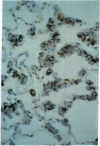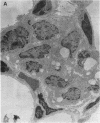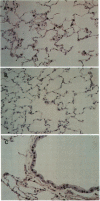Abstract
Keratinocyte growth factor (KGF) administered as a single intratracheal injection causes a prominent dose-dependent proliferation of type II alveolar epithelial cells in the lungs of adult rats. The increase in mitotically active alveolar cells histologically appears as a micropapillary epithelial cell hyperplasia after 2 d and peaks after 3 d in the form of monolayers of cuboidal epithelial cells lining alveolar septae. Proliferating cell nuclear antigen immunohistochemistry confirmed the profound proliferative response induced by KGF. The hyperplastic alveolar lining cells contain immunoreactive surfactant protein B and are ultrastructurally noted to contain lamellar inclusions characteristic of surfactant-producing type II pneumocytes. Mild focal bronchiolar epithelial hyperplasia is noted but is much less striking than the proliferation of type II pneumocytes. Large airways are unaffected by KGF. Daily intravenous injection of KGF is also able to cause pneumocyte proliferation. The normal adult rat lung constitutively expresses both KGF and KGF receptor mRNA, suggesting that endogenous KGF may be implicated in the paracrine regulation of the growth of pneumocytes. In conclusion, KGF rapidly and specifically induces proliferation and differentiation of type II pneumocytes in the normal adult lung.
Full text
PDF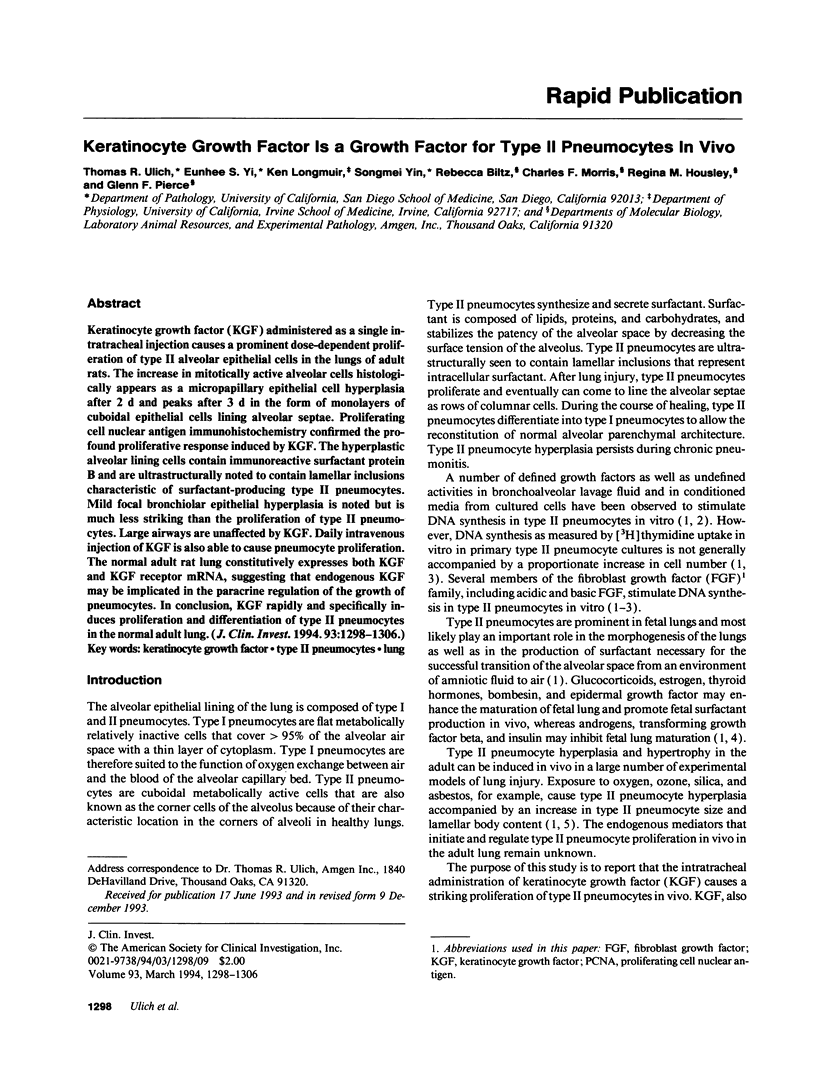
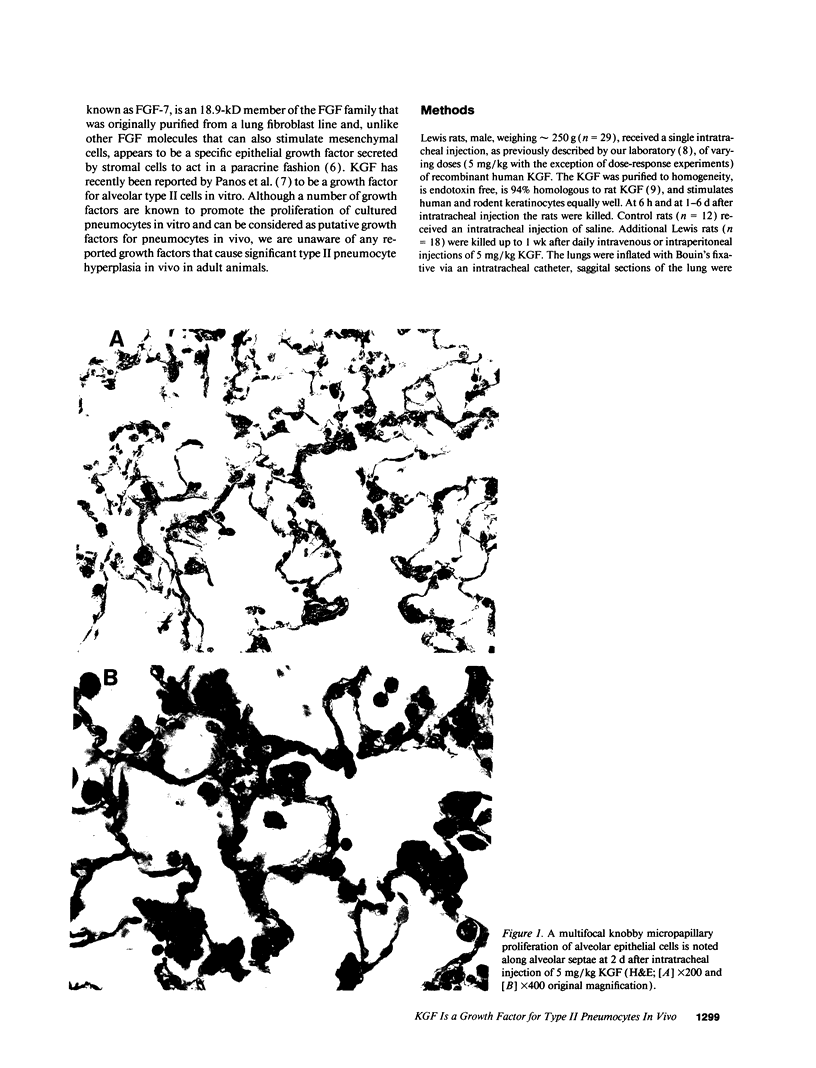
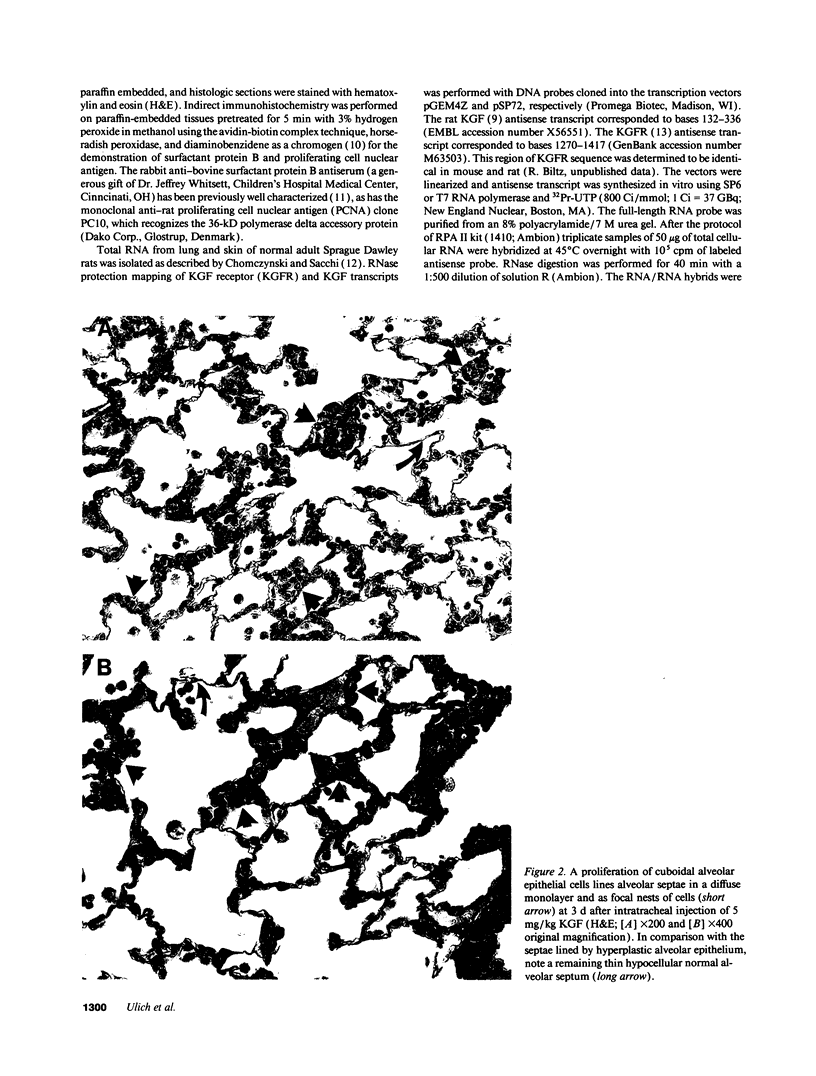
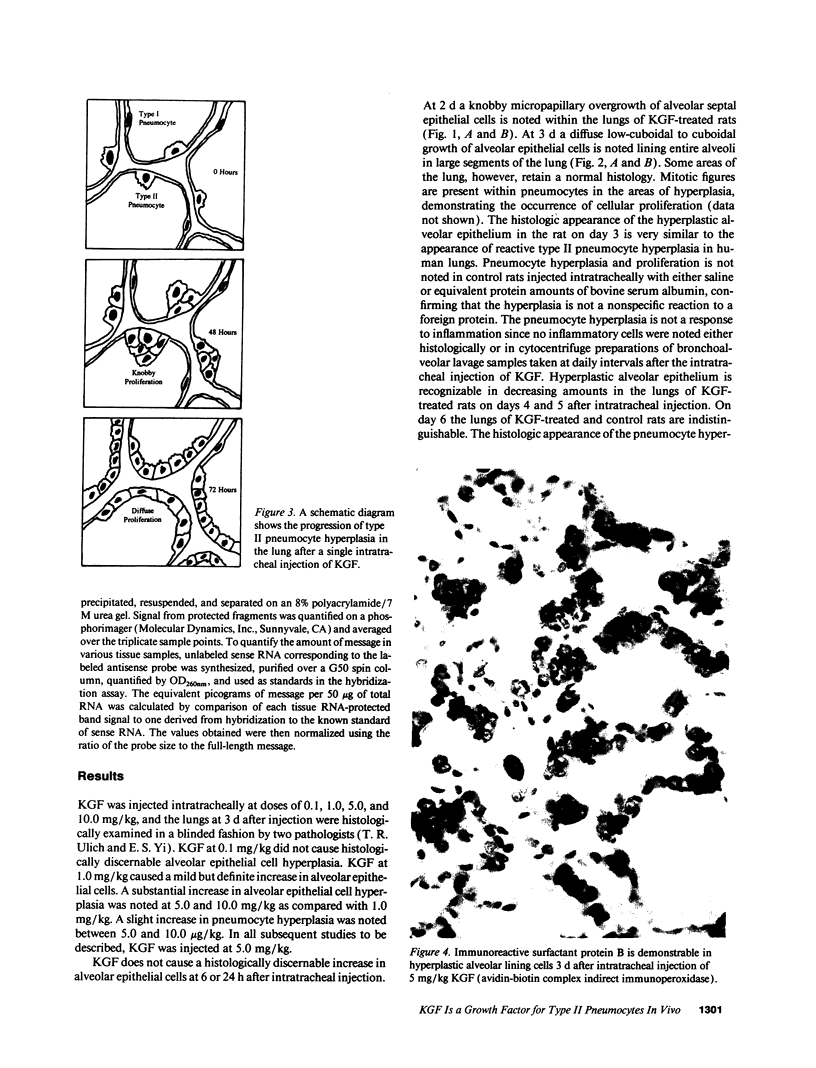
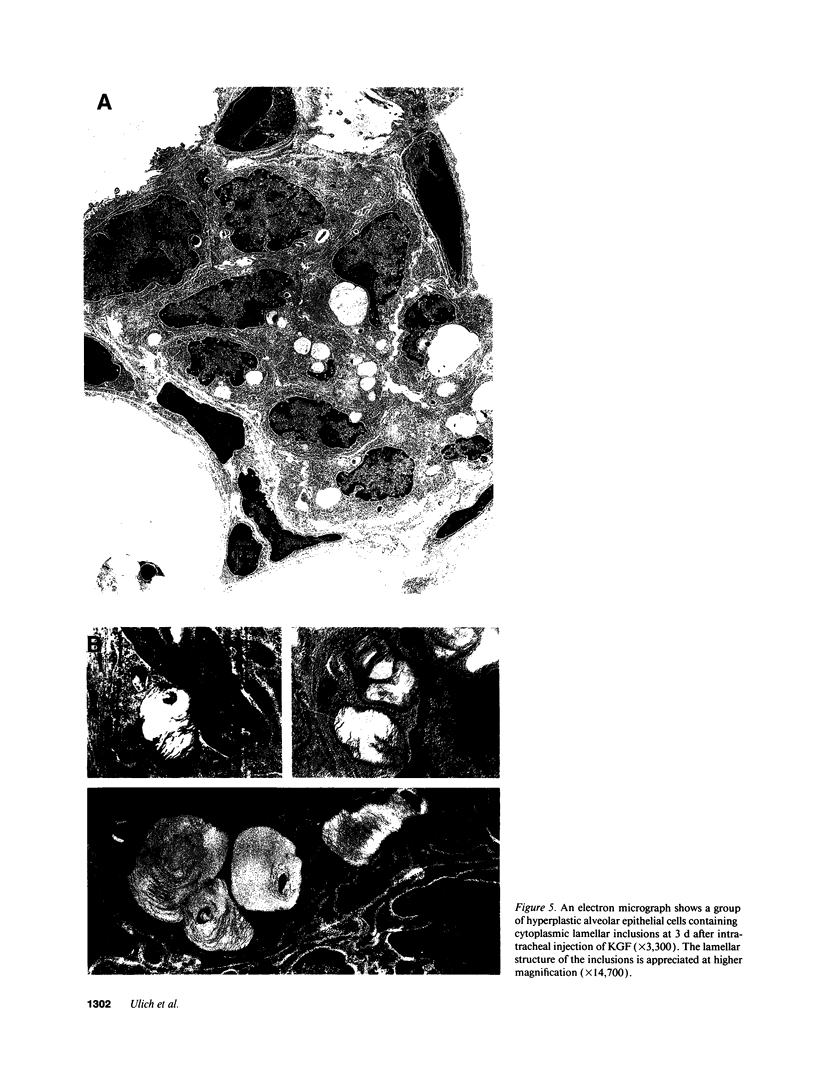
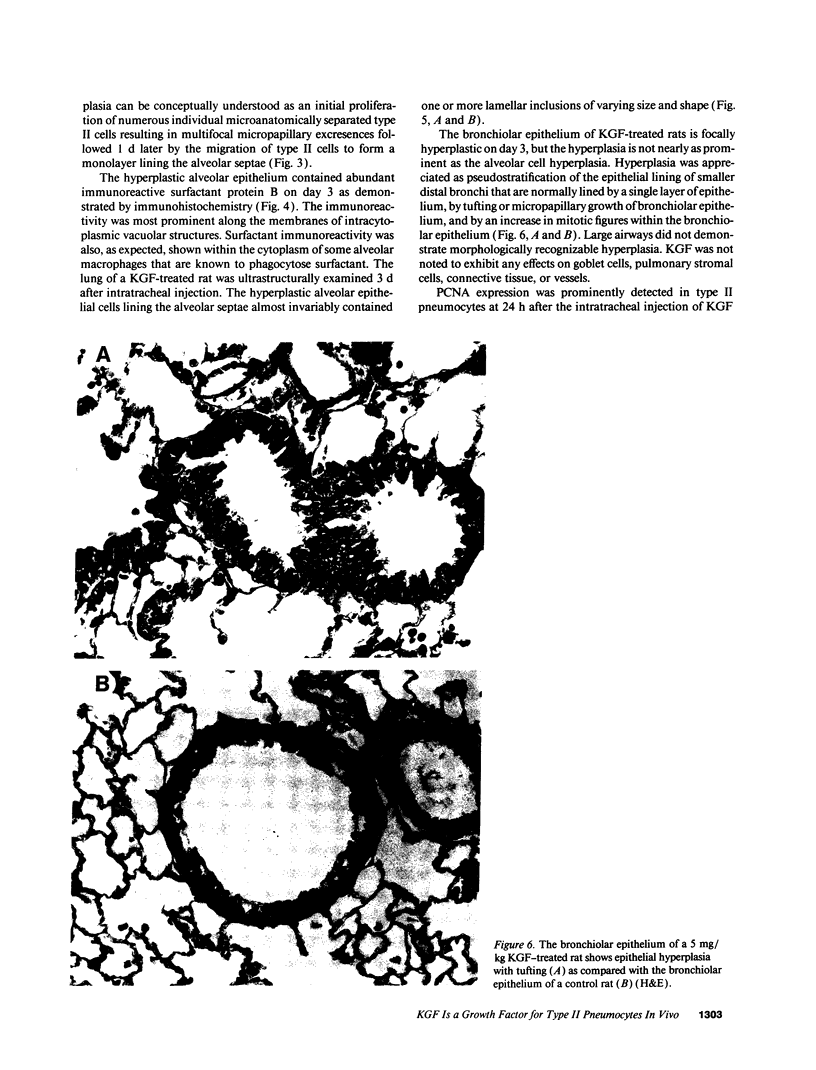
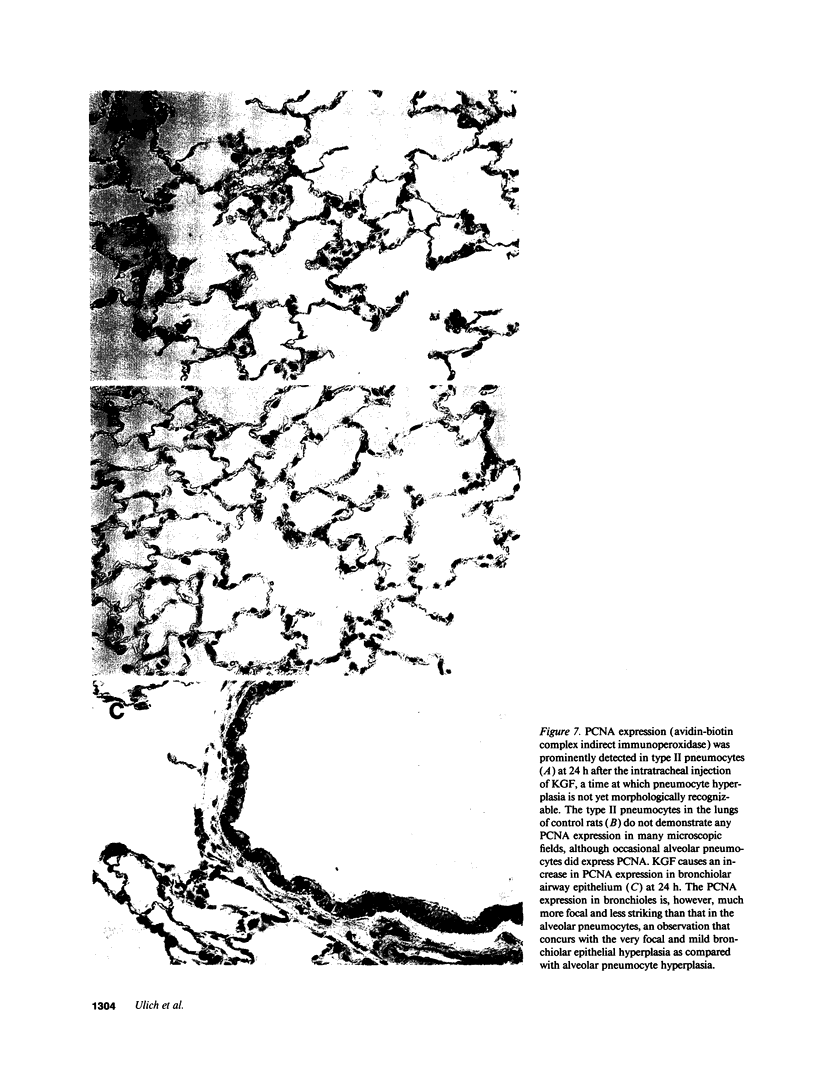
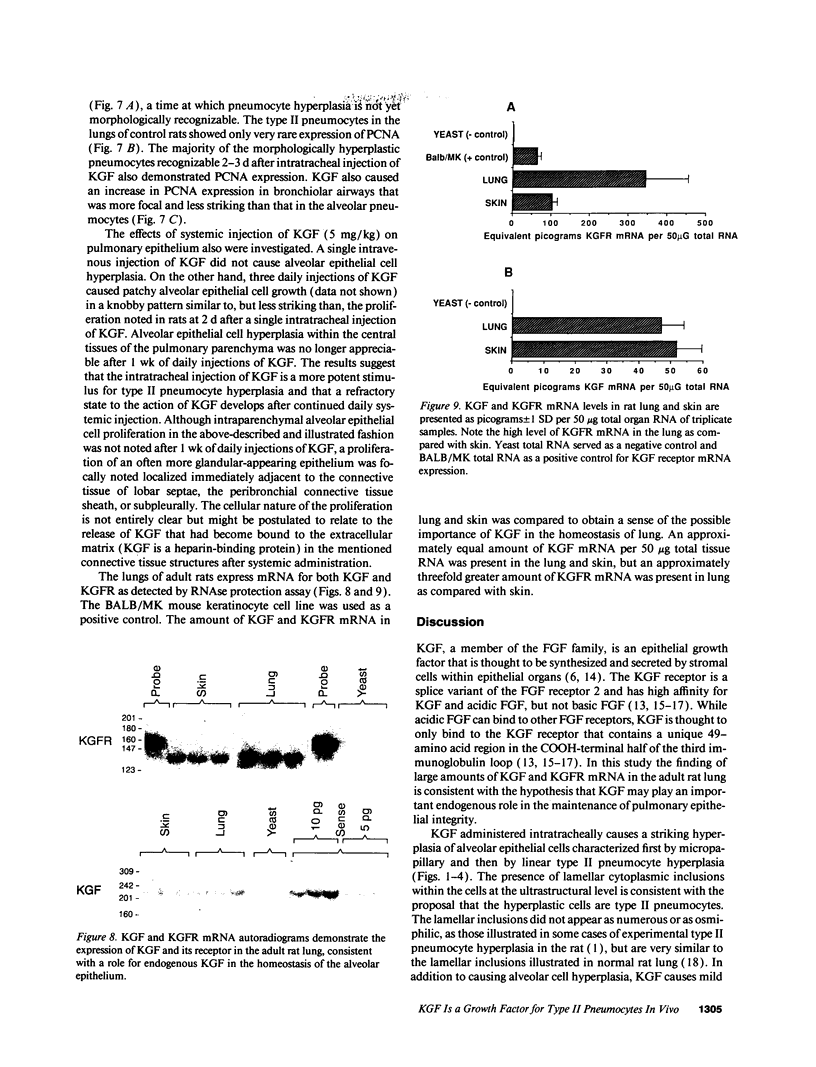
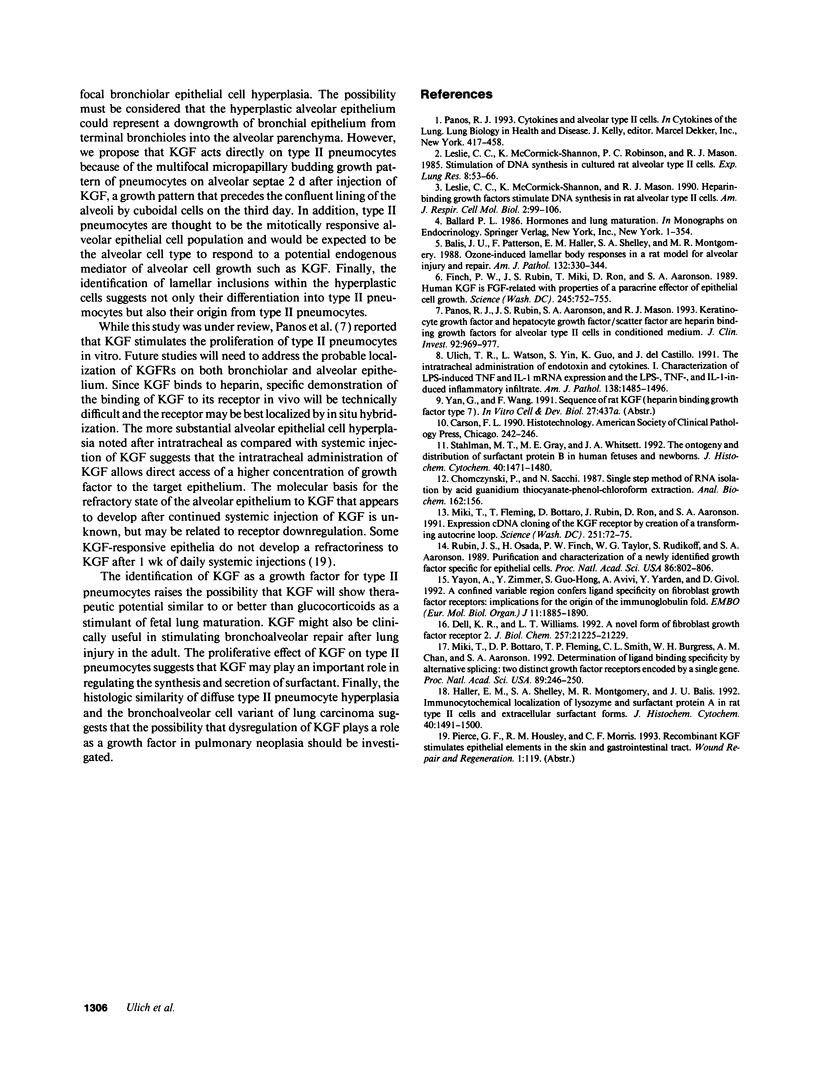
Images in this article
Selected References
These references are in PubMed. This may not be the complete list of references from this article.
- Balis J. U., Paterson J. F., Haller E. M., Shelley S. A., Montgomery M. R. Ozone-induced lamellar body responses in a rat model for alveolar injury and repair. Am J Pathol. 1988 Aug;132(2):330–344. [PMC free article] [PubMed] [Google Scholar]
- Ballard P. L. Hormones and lung maturation. Monogr Endocrinol. 1986;28:1–354. [PubMed] [Google Scholar]
- Chomczynski P., Sacchi N. Single-step method of RNA isolation by acid guanidinium thiocyanate-phenol-chloroform extraction. Anal Biochem. 1987 Apr;162(1):156–159. doi: 10.1006/abio.1987.9999. [DOI] [PubMed] [Google Scholar]
- Dell K. R., Williams L. T. A novel form of fibroblast growth factor receptor 2. Alternative splicing of the third immunoglobulin-like domain confers ligand binding specificity. J Biol Chem. 1992 Oct 15;267(29):21225–21229. [PubMed] [Google Scholar]
- Finch P. W., Rubin J. S., Miki T., Ron D., Aaronson S. A. Human KGF is FGF-related with properties of a paracrine effector of epithelial cell growth. Science. 1989 Aug 18;245(4919):752–755. doi: 10.1126/science.2475908. [DOI] [PubMed] [Google Scholar]
- Haller E. M., Shelley S. A., Montgomery M. R., Balis J. U. Immunocytochemical localization of lysozyme and surfactant protein A in rat type II cells and extracellular surfactant forms. J Histochem Cytochem. 1992 Oct;40(10):1491–1500. doi: 10.1177/40.10.1527372. [DOI] [PubMed] [Google Scholar]
- Leslie C. C., McCormick-Shannon K., Mason R. J. Heparin-binding growth factors stimulate DNA synthesis in rat alveolar type II cells. Am J Respir Cell Mol Biol. 1990 Jan;2(1):99–106. doi: 10.1165/ajrcmb/2.1.99. [DOI] [PubMed] [Google Scholar]
- Leslie C. C., McCormick-Shannon K., Robinson P. C., Mason R. J. Stimulation of DNA synthesis in cultured rat alveolar type II cells. Exp Lung Res. 1985;8(1):53–66. doi: 10.3109/01902148509069679. [DOI] [PubMed] [Google Scholar]
- Miki T., Bottaro D. P., Fleming T. P., Smith C. L., Burgess W. H., Chan A. M., Aaronson S. A. Determination of ligand-binding specificity by alternative splicing: two distinct growth factor receptors encoded by a single gene. Proc Natl Acad Sci U S A. 1992 Jan 1;89(1):246–250. doi: 10.1073/pnas.89.1.246. [DOI] [PMC free article] [PubMed] [Google Scholar]
- Miki T., Fleming T. P., Bottaro D. P., Rubin J. S., Ron D., Aaronson S. A. Expression cDNA cloning of the KGF receptor by creation of a transforming autocrine loop. Science. 1991 Jan 4;251(4989):72–75. doi: 10.1126/science.1846048. [DOI] [PubMed] [Google Scholar]
- Panos R. J., Rubin J. S., Csaky K. G., Aaronson S. A., Mason R. J. Keratinocyte growth factor and hepatocyte growth factor/scatter factor are heparin-binding growth factors for alveolar type II cells in fibroblast-conditioned medium. J Clin Invest. 1993 Aug;92(2):969–977. doi: 10.1172/JCI116673. [DOI] [PMC free article] [PubMed] [Google Scholar]
- Rubin J. S., Osada H., Finch P. W., Taylor W. G., Rudikoff S., Aaronson S. A. Purification and characterization of a newly identified growth factor specific for epithelial cells. Proc Natl Acad Sci U S A. 1989 Feb;86(3):802–806. doi: 10.1073/pnas.86.3.802. [DOI] [PMC free article] [PubMed] [Google Scholar]
- Stahlman M. T., Gray M. E., Whitsett J. A. The ontogeny and distribution of surfactant protein B in human fetuses and newborns. J Histochem Cytochem. 1992 Oct;40(10):1471–1480. doi: 10.1177/40.10.1527371. [DOI] [PubMed] [Google Scholar]
- Ulich T. R., Watson L. R., Yin S. M., Guo K. Z., Wang P., Thang H., del Castillo J. The intratracheal administration of endotoxin and cytokines. I. Characterization of LPS-induced IL-1 and TNF mRNA expression and the LPS-, IL-1-, and TNF-induced inflammatory infiltrate. Am J Pathol. 1991 Jun;138(6):1485–1496. [PMC free article] [PubMed] [Google Scholar]
- Yayon A., Zimmer Y., Shen G. H., Avivi A., Yarden Y., Givol D. A confined variable region confers ligand specificity on fibroblast growth factor receptors: implications for the origin of the immunoglobulin fold. EMBO J. 1992 May;11(5):1885–1890. doi: 10.1002/j.1460-2075.1992.tb05240.x. [DOI] [PMC free article] [PubMed] [Google Scholar]







